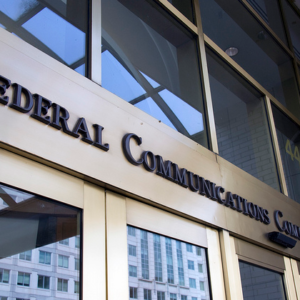The Federal Communications Commission’s recent proposal to streamline broadband labels is a welcome step toward common sense in an agency long addicted to bureaucratic overreach. By eliminating six unnecessary labeling requirements, the FCC signals that it may finally be willing to reduce regulatory clutter, rather than smothering providers — and consumers — with needless red tape.
The FCC voted at its October 28 meeting on a notice of proposed rulemaking to eliminate six requirements regarding its broadband labels while also seeking comments on other ways to streamline requirements.
The commission noted in its initial announcement that Congress directed it in 2021 to require broadband providers to display such labels, helping consumers make informed decisions when choosing a high-speed internet plan. The FCC put the labels in place the following year after much back-and-forth on what metrics should be required.
“The proposed changes would better align the requirements with the mandate from Congress and reduce unnecessary compliance burdens while preserving the core information that helps consumers compare different broadband plans,” the FCC said in its initial notice.
The notice of proposed rulemaking proposes to eliminate requirements that broadband providers:
—Read the labels to consumers over the phone.
—Itemize state and local pass-through fees that vary depending on consumer location.
—Provide information about the now-concluded Affordable Connectivity Program.
—Display labels in customer account portals.
—Make labels available in machine-readable format.
—Archive labels for at least two years after a service is no longer offered to new customers.
FCC Chairman Brendan Carr said the broadband labels have at times proven to be difficult to use since their introduction. “Since the labels became available, some have said that finding the needed information can be a ‘Sisyphean task,’ or even feel like a game of Where’s Waldo,” he said. “They aren’t finding the information they need to make an informed decision or not finding it in an efficient and timely manner.”
Carr noted in his blog post before the FCC meeting that the broadband label changes are a move to “separate the wheat from the chaff.”
“We want consumers to get quick and easy access to the information they want and need to compare broadband plans (as Congress has provided) without imposing unnecessary burdens,” Carr wrote.
In addition to the broadband label adjustments, the FCC will also seek comment on other potential changes, including:
—On whether to eliminate the multilingual display requirement.
—On further streamlining and eliminating any other label requirements that are unduly burdensome and provide minimal benefit to consumers.
—On removing the label template from the Code of Federal Regulations.
—On minor revisions to the label template.
The FCC will host a 30-day public comment period, followed by 30 days of reply comments, before voting on the issue.
If the FCC approves the changes, broadband labels will continue to provide consumers with the most important information to make informed decisions, as Congress intended. This includes details on pricing, introductory rates, and post-promotion rates. The labels will still reveal details about download and upload speeds, data caps, and equipment rental and other fees. They will continue to provide links to providers’ network management policies and other pertinent information about the services offered.
The labels will still incentivize providers to offer better customer service because consumers can still easily compare providers on the metrics that matter the most.
The implementation of broadband labels has been a benefit to consumers. It is a positive step for the FCC to continue examining the program to eliminate requirements that create unnecessary obligations on providers while providing little convenience to consumers.


